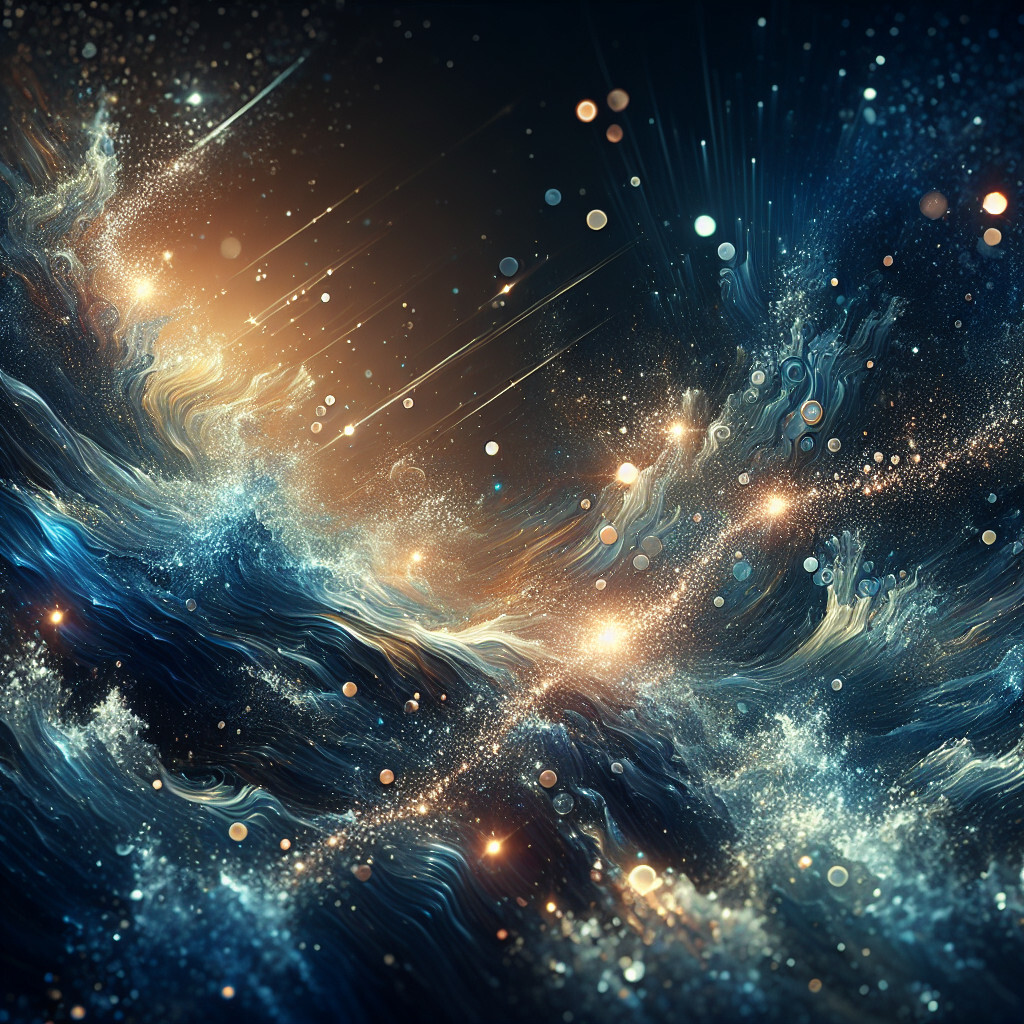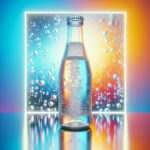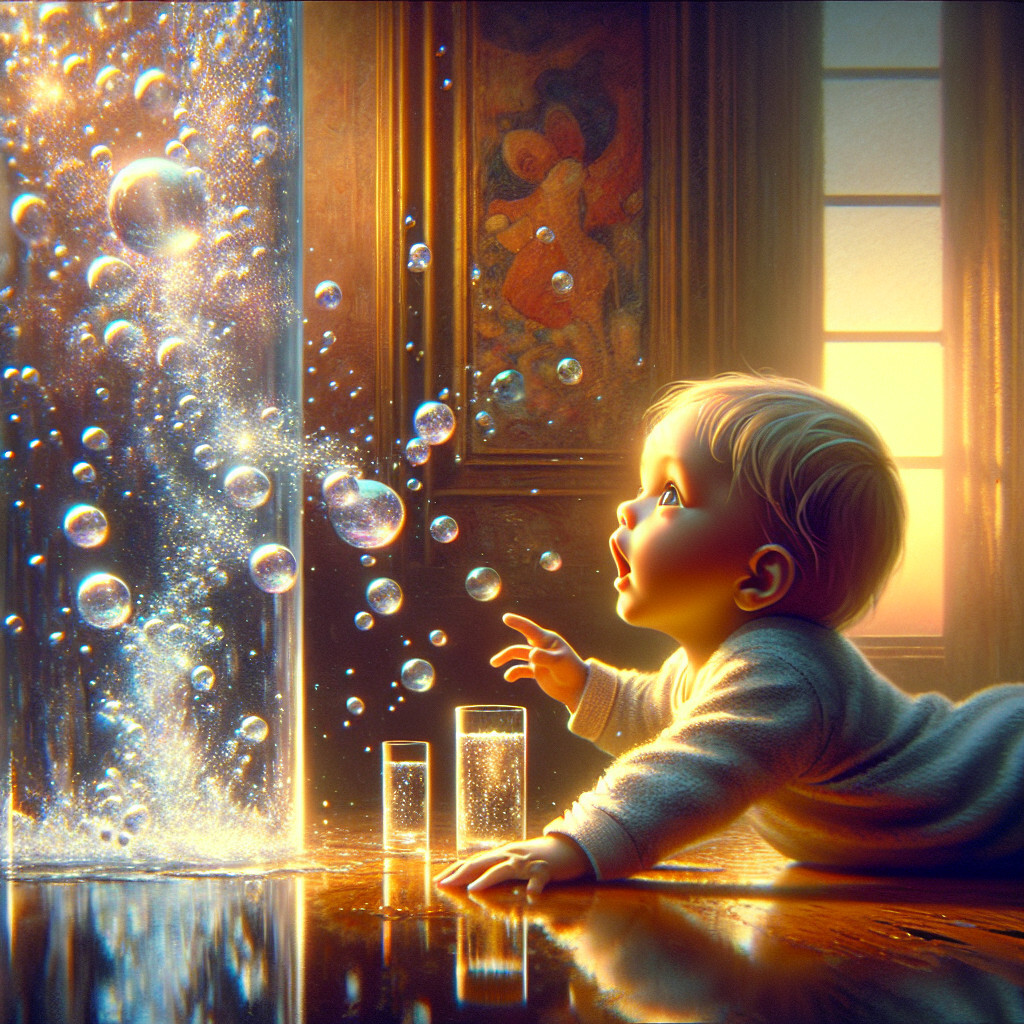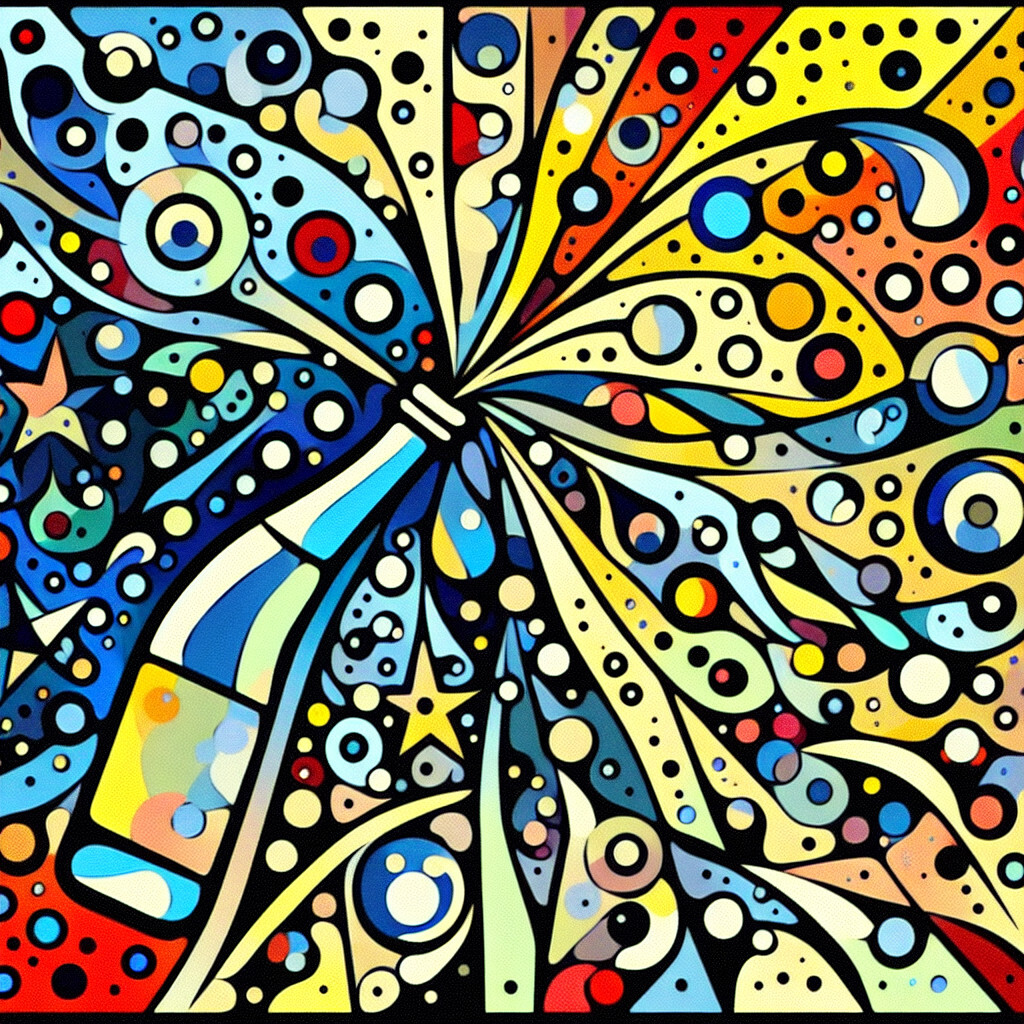-
Table of Contents
“Shimmering Serenity: The Dance of Light on Water”
Introduction
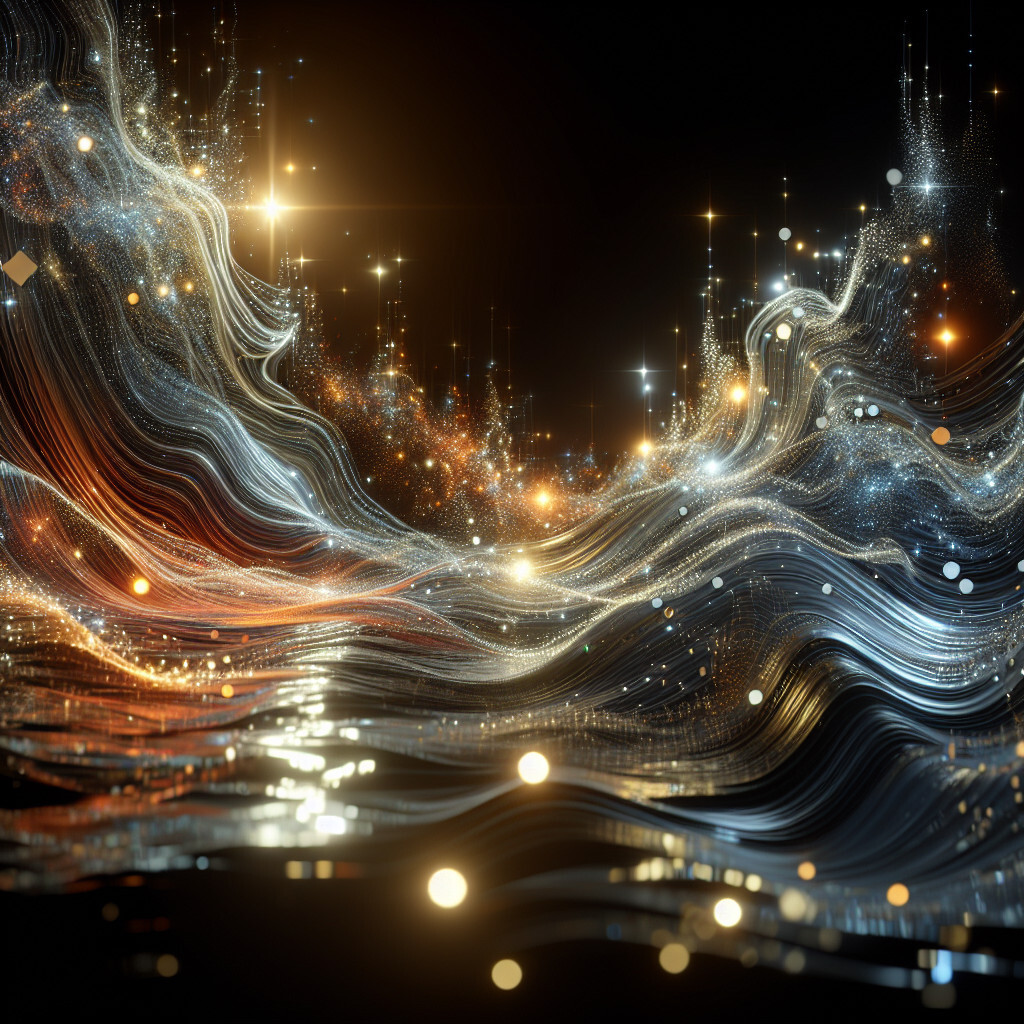
Sparkling on water refers to the visual effect created when sunlight or any other form of light hits the water surface, causing it to glitter or shimmer. This phenomenon is often observed in oceans, lakes, rivers, and even small bodies of water like ponds and puddles. The sparkling effect is a result of light refraction, reflection, and dispersion when it interacts with the water’s surface, which is constantly moving due to waves and ripples. This captivating spectacle is not only a favorite among photographers and nature lovers, but it also plays a significant role in various scientific studies related to water properties and light behavior.
The Science Behind the Sparkle: Understanding Light Reflection on Water
The captivating sparkle of sunlight dancing on water has been a source of fascination and inspiration for centuries. This natural phenomenon, often depicted in art and literature, is not just a beautiful spectacle but also a scientific marvel. The science behind this sparkle, or glitter as it is often referred to, is a fascinating interplay of light, water, and our perception.
The fundamental principle at work here is the reflection of light. When light encounters a surface, it can either be absorbed, transmitted, or reflected. In the case of water, a significant portion of the light is reflected. This reflection is what gives rise to the shimmering effect we observe. However, the reflection of light on water is not as straightforward as it might seem. It is governed by the laws of physics, particularly the law of reflection, which states that the angle of incidence is equal to the angle of reflection.
The surface of water is rarely perfectly smooth. It is constantly disturbed by wind, currents, and other factors, creating a multitude of tiny, moving mirrors. Each of these mirrors reflects light at a different angle, depending on its orientation at any given moment. As a result, the light reaching our eyes comes from many different directions, creating the impression of a sparkling, glittering surface.
The intensity and color of the sparkle are also influenced by several factors. The angle of the sun, the clarity of the atmosphere, and the nature of the water itself all play a role. When the sun is high in the sky, the light is more direct, and the sparkle is often bright and white. As the sun lowers, the light has to pass through more of the Earth’s atmosphere, which scatters the shorter, bluer wavelengths of light, leaving the longer, redder wavelengths. This is why the sparkle on water can appear golden or even red at sunrise or sunset.
The clarity of the water and the atmosphere also affect the sparkle. Clear water and a clear sky allow more light to reach the water’s surface and be reflected. In contrast, cloudy or murky conditions can diffuse the light, reducing the intensity of the sparkle. Similarly, the presence of particles in the water, such as sediment or algae, can absorb or scatter the light, altering the color and intensity of the sparkle.
Our perception also plays a crucial role in the sparkle we observe. The human eye is more sensitive to light coming directly from a source, such as the sun, than to light reflected off a surface. This is why the sparkle appears brighter when we look at the water from a certain angle. Furthermore, our brain interprets the rapidly changing patterns of light and dark as movement, adding to the dynamic quality of the sparkle.
In conclusion, the sparkle on water is a complex phenomenon resulting from the reflection of light on a constantly changing surface, influenced by various environmental factors and our perception. It is a beautiful example of how physics and nature intertwine to create stunning visual effects. So, the next time you find yourself mesmerized by the glittering surface of a lake or sea, take a moment to appreciate not just the beauty, but also the science behind the sparkle.
The Aesthetic Appeal of Sparkling Water: A Photographic Journey
Sparkling water, with its effervescent bubbles and refreshing taste, has long been a favorite beverage for many. However, beyond its thirst-quenching properties, sparkling water also holds a unique aesthetic appeal that has captivated photographers and artists alike. This article embarks on a photographic journey, exploring the visual allure of sparkling water and its ability to transform ordinary scenes into extraordinary spectacles.
The aesthetic appeal of sparkling water begins with its inherent dynamism. Unlike still water, sparkling water is alive with movement. The constant rise and burst of tiny bubbles create a mesmerizing spectacle, a dance of light and motion that is a delight to behold. Photographers often capture this dynamism in close-up shots, where the bubbles become the stars of the show. The resulting images are a testament to the beauty of the mundane, revealing a world of wonder in a simple glass of water.
Moreover, sparkling water’s interaction with light adds another layer to its visual charm. When sunlight or artificial light hits the surface of sparkling water, it refracts and scatters, creating a dazzling display of sparkles. This phenomenon is particularly striking during golden hours, when the warm hues of the sun blend with the cool tones of the water, producing a breathtaking tableau of colors. Photographers often exploit this interplay of light and water to create stunning images, using the sparkles as a natural filter to enhance the mood and atmosphere of their shots.
In addition to its standalone beauty, sparkling water also enhances the aesthetic appeal of its surroundings. Whether it’s a crystal-clear lake mirroring the surrounding landscape, a glass of champagne against a backdrop of a festive celebration, or a bottle of sparkling water nestled among fresh fruits and vegetables, the presence of sparkling water elevates the visual appeal of the scene. Its effervescence adds a touch of magic and whimsy, transforming ordinary settings into something more enchanting and captivating.
Furthermore, the aesthetic appeal of sparkling water extends beyond the realm of still photography. In the world of cinematography, sparkling water is often used to create dynamic and visually engaging scenes. The bubbles’ movement, the light’s sparkle, and the water’s transparency all contribute to a rich visual texture that adds depth and interest to the film’s imagery. From romantic scenes featuring champagne toasts to action sequences involving underwater adventures, sparkling water plays a crucial role in enhancing the visual storytelling.
In conclusion, the aesthetic appeal of sparkling water is multifaceted, stemming from its dynamism, its interaction with light, its ability to enhance its surroundings, and its contribution to visual storytelling. This photographic journey has only scratched the surface of the visual allure of sparkling water. The next time you enjoy a glass of sparkling water, take a moment to appreciate not just its refreshing taste, but also its visual beauty. Whether captured through the lens of a camera or enjoyed with the naked eye, the sparkle on water is indeed a sight to behold.
The Role of Sunlight in Creating Water Sparkles: An In-depth Analysis
The phenomenon of sparkling on water, a sight that has captivated humans for centuries, is a fascinating interplay of light, water, and the human eye. This spectacle, often observed on a sunny day when light dances on the surface of a body of water, is not merely a visual delight but a complex scientific process. This article aims to provide an in-depth analysis of the role of sunlight in creating water sparkles.
Sunlight, a mixture of different colors or wavelengths of light, plays a pivotal role in this process. When sunlight strikes the surface of the water, it is refracted, or bent, and reflected. The refraction and reflection of light are governed by the laws of physics, specifically the law of reflection and Snell’s law of refraction. The angle at which sunlight hits the water surface determines the degree of bending and reflection of light, which in turn influences the intensity and pattern of the sparkles.
The surface of the water is rarely perfectly smooth. Wind, currents, and other disturbances cause the formation of waves and ripples. These irregularities on the water surface act like numerous tiny mirrors, each reflecting sunlight at different angles. When sunlight hits these uneven surfaces, it is scattered in various directions, creating a myriad of bright spots of light that we perceive as sparkles.
However, the creation of water sparkles is not solely dependent on the interaction between sunlight and water. The human eye and brain also play a crucial role in this process. The sparkles are, in fact, points of light that are significantly brighter than the surrounding area. The human eye is naturally drawn to these bright spots, and the brain interprets this information as sparkles. The size, brightness, and number of sparkles that we perceive can vary depending on the observer’s distance from the water, angle of view, and the sensitivity of their eyes to light.
Furthermore, the color of the sparkles is also influenced by the sunlight’s color, which can change depending on the time of day and atmospheric conditions. For instance, during sunrise or sunset, when sunlight has to pass through a larger portion of the Earth’s atmosphere, shorter wavelengths of light (blue and green) are scattered out of our line of sight, and longer wavelengths (red, orange, and yellow) dominate. This results in sunlight, and consequently, water sparkles, appearing warmer or redder.
In conclusion, the creation of water sparkles is a complex process that involves the interplay of sunlight, water, and the human visual system. Sunlight, with its different colors or wavelengths, interacts with the water surface, which is constantly being shaped by various factors. This interaction results in the scattering of light, creating bright spots that our eyes perceive as sparkles. The role of sunlight in this process is pivotal, as it not only provides the light required for the sparkles to form but also influences their color and intensity. Therefore, the next time you find yourself mesmerized by the sparkling on water, you will appreciate not just its beauty but also the fascinating science behind it.
Sparkling Water Surfaces: The Intersection of Physics and Beauty
Sparkling water surfaces are a captivating sight, a spectacle that has fascinated humans for centuries. The shimmering dance of light on water, whether it’s a tranquil lake or a bustling river, is a mesmerizing display of nature’s beauty. However, beyond its aesthetic appeal, this phenomenon is a fascinating intersection of physics and beauty, a testament to the intricate laws that govern our universe.
The sparkle on water surfaces is primarily a result of the interaction between light and water. Light, as we know, travels in waves. When these waves encounter a surface, such as that of a water body, they are reflected, refracted, or absorbed. The sparkle we observe is essentially the reflection of light off the water surface. However, the process is not as straightforward as it seems. The angle at which light hits the water surface, the nature of the surface itself, and the observer’s position all play crucial roles in this spectacle.
The angle of incidence, or the angle at which light strikes the water surface, is a key determinant of the reflection we observe. When light hits the water at a low angle, it is largely reflected, creating a dazzling display of sparkles. Conversely, when the angle of incidence is high, most of the light is refracted or bent as it enters the water, reducing the intensity of the sparkle.
The nature of the water surface also significantly influences the sparkle. A calm and smooth water surface acts like a mirror, reflecting light uniformly and creating a serene, shimmering effect. On the other hand, a rough or turbulent surface, with its myriad of tiny, moving mirrors, reflects light in different directions. This results in the dynamic, twinkling sparkle we often associate with flowing rivers or windy lakes.
The observer’s position, too, is integral to the perception of the sparkle. The sparkle is most intense when the observer is positioned such that the reflected light rays directly reach their eyes. This is why the sparkle seems to follow us as we move around a water body, a phenomenon known as specular reflection.
While the physics behind the sparkle on water surfaces is intriguing, it is the aesthetic appeal of this phenomenon that truly captures our imagination. The sparkle has been a source of inspiration for artists, poets, and philosophers throughout history. It has been immortalized in countless paintings, poems, and philosophical discourses, symbolizing everything from the fleeting nature of life to the vastness of the universe.
In conclusion, the sparkle on water surfaces is a beautiful manifestation of the laws of physics. It is a testament to the intricate interplay of light and matter, angle and observer, chaos and order. It is a reminder of the inherent beauty in our universe, a beauty that is not just skin-deep but deeply rooted in the fundamental laws that govern our existence. So, the next time you find yourself by a sparkling water body, take a moment to appreciate not just its aesthetic appeal, but also the complex physics that makes it possible.
Q&A
1. Question: What causes water to sparkle?
Answer: The sparkle on water is caused by the reflection, refraction, and dispersion of light, usually sunlight, by the water’s surface.
2. Question: Can sparkling water be harmful to health?
Answer: No, sparkling water is not harmful to health. It’s just water that has been infused with carbon dioxide under pressure.
3. Question: Why does sparkling water taste different from regular water?
Answer: Sparkling water tastes different from regular water because of the carbon dioxide gas that is infused into it, which creates carbonic acid and gives it a slightly tart flavor.
4. Question: Is there a difference between sparkling water and soda water?
Answer: Yes, there is a difference. While both are carbonated, soda water usually contains added minerals like potassium bicarbonate and potassium sulfate, which can slightly alter its taste.
Conclusion
The sparkling on water is typically a visual effect caused by the reflection and refraction of light by the water’s surface. It can be influenced by several factors including the angle of the sunlight, the nature of the water body, and the observer’s position. This phenomenon not only enhances the aesthetic appeal of the water but also plays a role in natural processes like photosynthesis in aquatic plants.

